Construction
When You Should Call a Professional for Roof Repairs and Maintenance
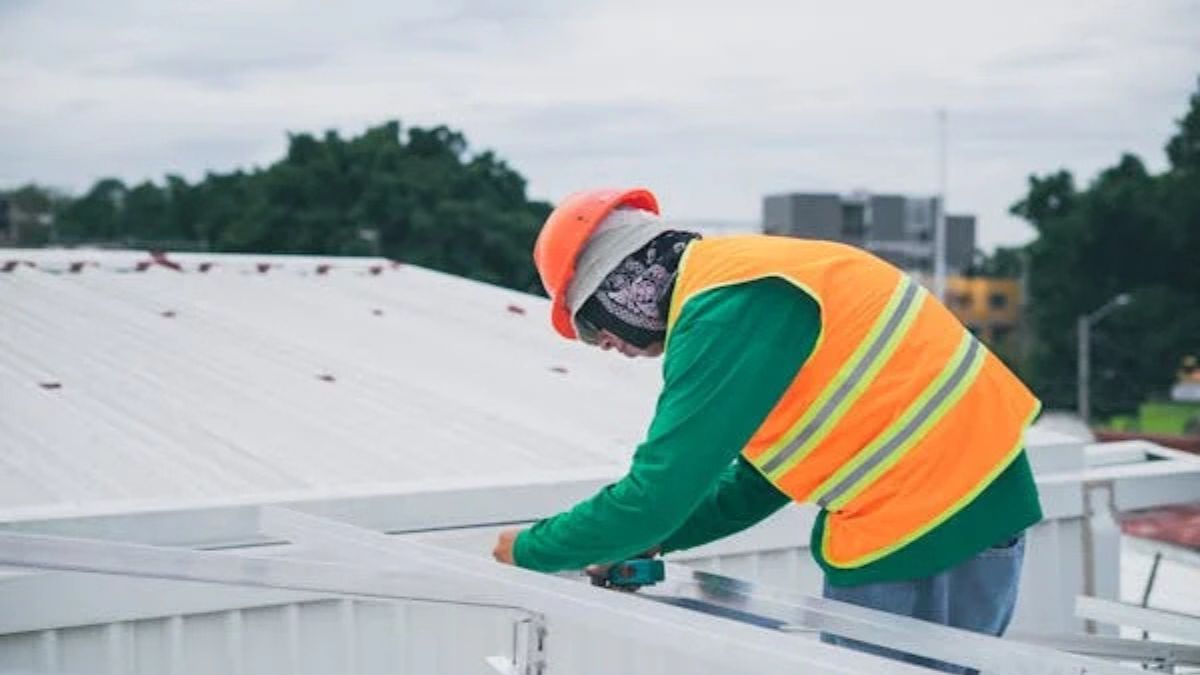
Many homeowners may feel tempted to take on roofing repairs themselves, especially with the abundance of DIY resources available today. However, understanding when to call a professional can save you time, money, and stress down the line.Roofs protect you from the elements and contribute significantly to energy efficiency. Installation errors, weather damage, and age can all impact your roof’s condition. Here’s a closer look at when you should consider reaching out to an expert for repair and maintenance.
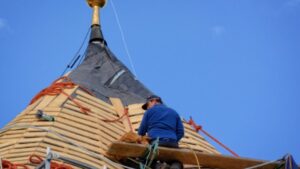
Understanding Common Signs of Roof Damage
Recognizing the signs of roof damage is the first step in determining whether a professional is needed. Homeowners should routinely inspect their roofs for physical signs, such as missing shingles, curling edges, or visible granules in gutters. These issues often indicate that the roof has sustained damage that requires immediate attention.
Don’t forget to check for water stains or spots on the ceiling and walls indoors, as these can suggest leaks stemming from roof problems. If you identify any of these signs, it may be time to consider hiring a professional for roof repair — they can assess the extent of the damage accurately, which can be difficult to gauge on your own. Ignoring these warning signs could lead to more significant problems and costly repairs, and that’s why early intervention is key to maintaining a healthy roof.
Assessing the Age of Your Roof
The age of your roof influences its condition and the likelihood of needing professional repairs. Most roofing materials have a predetermined lifespan. Asphalt shingles typically last about 20 to 25 years, while metal roofs can last up to 70 years with proper maintenance. If your roof is nearing the end of its expected lifespan, have it evaluated by a professional. They can provide insight into whether a minor repair will suffice or if a complete replacement is necessary.
Older roofs may have compounded issues from weather exposure and deterioration that a non-professional might miss. Skilled roofers will undertake a thorough inspection and give you an accurate estimate of possible repairs needed, ensuring your home remains secure.
The Role of Extreme Weather Events
High winds, heavy rain, snow, and hail can directly damage roofing materials, resulting in leaks and other structural issues. After experiencing severe weather, visually inspect your roof for any damage. Physical wear and tear may not always be evident from the ground, which is why a professional assessment can be invaluable. A specialist can identify potential vulnerabilities exposed by the weather and offer solutions for repairs or enhancements to prevent future issues. If you suspect storm-related damage but aren’t sure, seeking professional help can bring peace of mind and ensure your roof will protect your home effectively.
DIY vs. Professional Repairs: Weighing the Risks
While DIY projects can be rewarding, roof repairs are often best left to the professionals. One key reason is safety; climbing onto a roof can be dangerous. Beyond safety concerns, consider the effectiveness of your repair work.
Roof damage requires specialized knowledge and skills that a homeowner may not possess. A small fix might turn into a larger issue if not handled properly, leading to greater costs down the line. Roofers have the experience and tools necessary to complete jobs safely and efficiently so that the repairs are durable and effective. As with any home improvement project, it’s wise to measure the risks of going DIY versus the many benefits of professional expertise.
The Importance of Regular Maintenance Checks
In areas that experience extreme weather, most professionals advocate for biannual inspections. Regular maintenance identifies small issues before they become significant problems requiring extensive repairs or replacement. During these inspections, professionals will evaluate the state of shingles, check the integrity of the flashing, assess the drainage system, and look for signs of mold or mildew.
A well-maintained roof enhances energy efficiency and property value, a worthwhile investment for homeowners. Scheduling regular roof maintenance with a qualified contractor ensures your roof remains in excellent shape for years to come.
Choosing the Right Roofing Professional
The selection of the right roofing professional takes into account several factors: experience, reputation, and certifications among the most critical ones. Recommendations from friends or online reviews can offer insights into a contractor’s quality of work.
Make sure that the contractor is licensed and insured, protecting you from potential liabilities. Asking for estimates from multiple professionals can also compare pricing and services offered. Communicate clearly with your roofing expert regarding your concerns and desired outcomes to foster a successful working relationship. When you invest time in selecting a qualified professional, you safeguard your home’s structural integrity and enhance its longevity.
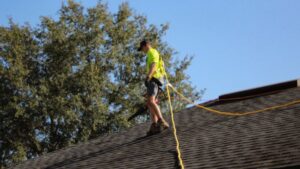
Taking the right steps to address roof issues can go a long way in preserving your home’s safety and value. Roofs experience wear and tear, and recognizing when to call a professional is crucial for maintaining their health. Proactive maintenance prevents future problems and protects your investment. As a result, timely intervention by a professional roofing service can save you both time and money in the long run.
Construction
6 Reasons a New Roof Is Smarter Than Endless Repairs

Keeping your home protected starts at the top. The roof acts as the first defense against wind, rain, snow, and heat. Over time, damage is inevitable. Many homeowners find themselves stuck in a cycle of small repairs, thinking they’re saving money. Yet there comes a point where patchwork is no longer practical or cost-effective.
Investing in a new roof may seem like a major undertaking, but in many cases, it’s the smarter and more financially sound decision. Here are six reasons to consider a full replacement rather than continuing with repeated repairs.
Repair Costs Add Up Quickly
Minor repairs seem harmless when spaced out, but their cumulative cost over time can easily surpass that of a new roof. Materials, labor, and service fees increase with each visit from a roofing contractor. What begins as a small patch on a leak can grow into a larger structural issue, especially if underlying damage goes unnoticed.
Inconsistent fixes can also cause aesthetic mismatches. Shingles from different batches or manufacturers might not blend well, leaving the roof looking piecemeal. Over several years, you may find you’ve spent thousands on temporary solutions that didn’t fully address the root of the problem.
Improved Energy Efficiency
An older roof often lacks the insulation and sealing capabilities of newer materials. This leads to poor temperature regulation inside the home. Drafts, cold spots, and overworked HVAC systems all contribute to rising energy bills. A new roof built with updated materials and technology can dramatically improve energy efficiency.
Reflective shingles, proper ventilation, and underlayment materials keep indoor temperatures more consistent year-round. This reduces strain on heating and cooling systems and helps lower monthly utility costs. In areas with extreme seasonal weather, the difference can be significant and long-lasting.
Long-Term Peace of Mind
There’s a level of security that comes with knowing your roof is reliable. Instead of worrying about the next storm or potential leaks, you can relax knowing the home is protected. Warranties on new roofs often last 20 years or more, offering assurance that future problems are covered.
Many contractors offer free inspections and estimates to help homeowners understand their options. If you’re unsure whether it’s time to move on from repairs, click here to learn how a full roof replacement could benefit your specific situation. Being informed empowers you to make the best decision based on both short-term needs and long-term savings.
Better Protection Against Weather Events
Storms are becoming more frequent and more intense. An aging roof is less likely to hold up under the pressure of heavy rain, wind, or hail. Once the protective layers wear down, leaks become more common, and structural integrity weakens. This opens the door to mold, rot, and interior water damage.
Modern roofing systems are built to meet stricter codes and withstand harsher conditions. Investing in a new roof now can prevent the stress of emergency repairs after every major storm. It’s a proactive step that secures the home’s value and shields its contents from unpredictable weather.
Increased Home Value and Curb Appeal
The roof plays a major role in the appearance of a house. Faded, warped, or discolored shingles can make even the most well-kept home look neglected. Replacing a worn roof with fresh, modern materials instantly improves curb appeal and can increase resale value.
Buyers are more likely to show interest in homes that don’t need immediate maintenance. A new roof signals that the property has been cared for and reduces concerns about hidden repair costs. If you’re considering selling in the next few years, this upgrade becomes an investment in both appearance and marketability.
Fewer Ongoing Disruptions
Roof repairs are often disruptive. Whether it’s hammering during the day or scheduling around rainy weather, the process can interfere with daily routines. When problems keep resurfacing, so do the disruptions. It’s inconvenient to constantly revisit the same issue without a lasting solution.
Choosing to install a new roof eliminates this cycle. Once the work is complete, you can expect peace of mind and freedom from scheduling appointments, meeting contractors, or cleaning up debris. It simplifies maintenance and lets you focus on other parts of homeownership.
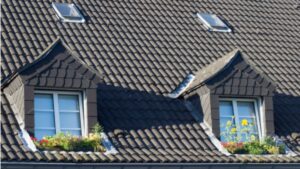
Choosing between continued repairs and a new roof can feel overwhelming, but the benefits of replacement often outweigh the temporary relief of quick fixes. A strong, efficient roof provides more than protection; it offers comfort, cost savings, and peace of mind. Taking action now helps avoid larger issues later and brings long-term value to one of your most important assets: your home.
Construction
Your Commercial Roof Needs Immediate Attention If You See These Signs

A commercial roof protects far more than just the structure beneath it. It shields equipment, inventory, staff, and the overall integrity of your business operations. While regular maintenance can extend a roof’s life, certain warning signs suggest immediate action is necessary. Waiting too long can turn minor issues into major expenses, and for commercial properties, those delays can mean disruptions, damage, or even safety concerns.
Knowing what to watch for helps building owners and managers act before a situation becomes costly or hazardous.
Persistent Leaks or Water Stains
One of the most noticeable red flags is water infiltration. Leaks, even small ones, are never just surface issues. They often indicate deeper problems in the roofing system. If water stains begin to appear on ceilings or walls, it means moisture has already penetrated the top barrier and is moving into your building’s infrastructure.
This moisture can lead to mold growth, insulation damage, and eventually structural decay. Regular patching may seem like a solution, but repeated leaks call for a thorough inspection. Addressing these issues at the source is vital to prevent larger, more invasive repairs.
Blistering or Bubbling on the Roof Surface
Blisters and bubbles on flat or low-slope roofs are more than just cosmetic concerns. They occur when air or moisture becomes trapped beneath the surface membrane. Over time, this trapped material expands and weakens the layers of the roof.
Once this occurs, the roof is more vulnerable to tearing, punctures, and accelerated deterioration. Areas with visible bubbling should be assessed immediately. These signs often suggest that the roofing materials are failing to adhere correctly or that water has compromised the sealants.
Age of the Roof and Repair History
Even a well-maintained commercial roof has a lifespan. Most systems last between 20 and 30 years, depending on material, usage, and environmental conditions. If your roof is nearing that age and requires frequent maintenance, it may be time to consider replacement instead of another round of fixes.
Looking at the repair history provides valuable insight. When issues start cropping up repeatedly, it’s a sign the entire system may be approaching failure. Partnering with qualified professionals can give you clarity about next steps. For business owners unsure about their current roof’s condition, speaking to commercial roofing experts can offer objective evaluations and proactive solutions. A professional opinion can uncover concerns before they become emergencies.
Sagging or Uneven Areas
A properly installed commercial roof should remain level and stable. If sections begin to sag or appear uneven, it’s often a sign of underlying structural damage. Ponding water, water that doesn’t drain properly, can add weight and pressure, eventually compromising the roof deck.
If left unattended, these dips can worsen during periods of heavy rain or snow. Correcting the drainage system may help in some cases, but once sagging is visible, a more extensive structural evaluation is usually required.
Unexplained Spikes in Energy Costs
Your roof does more than keep the weather out; it helps regulate indoor temperatures. A sudden increase in heating or cooling bills may point to an insulation problem in the roofing system. As membranes wear down or insulation becomes saturated with moisture, your HVAC system has to work harder to maintain a stable indoor environment.
This inefficiency is not only costly but also suggests the roof is no longer performing one of its primary functions. Repairing or replacing insulation in compromised areas can lead to noticeable savings in utility expenses and help restore comfort levels within the building.
Loose Flashing or Damaged Seals
Flashing protects joints and transitions, such as those around skylights, vents, and HVAC units, from water intrusion. Over time, flashing can loosen due to temperature fluctuations, wind exposure, or improper installation. When this happens, water finds its way through the smallest gaps, leading to unseen damage.
If flashing appears lifted, missing, or cracked, the roof is vulnerable. These vulnerable points are frequently the entry path for leaks that cause widespread interior harm. Having a technician inspect and reseal these areas is a priority.
Signs of Interior Mold or Odor
A musty smell inside your commercial building might be the first clue that water damage is already affecting your indoor environment. Mold thrives in areas with excess moisture, and the underside of a leaking roof is a common hotspot. The presence of mold not only damages materials but can pose health risks to employees and customers.
When these odors become persistent or when visible mold begins to spread, immediate intervention is required. Cleaning the surface may remove symptoms, but it won’t address the underlying source unless the roofing issues are handled concurrently.
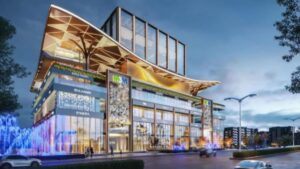
A commercial roof rarely fails without warning. Visible damage, rising costs, and interior symptoms all serve as signals that attention is needed. Addressing problems early reduces risk, controls repair expenses, and safeguards daily business operations. Being proactive today can save both money and time tomorrow, and help maintain the confidence of everyone who walks through your doors.
Construction
Innovations in Concrete Tilt Panel Construction: Efficiency Meets Durability
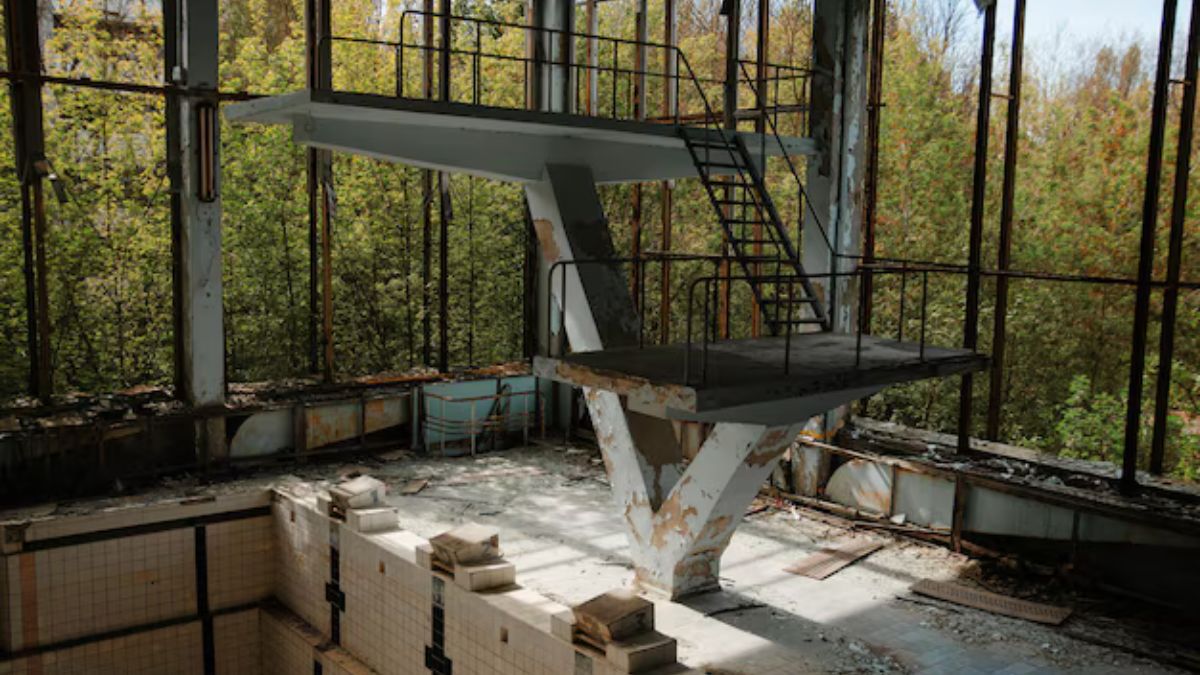
The construction industry has long been a cornerstone of innovation, continually evolving to meet the needs of a growing population and the demands of environmental sustainability. Among the various techniques that have transformed the industry, concrete tilt panel construction stands out as a method that embodies both efficiency and durability in modern building practices. This article delves into the recent advancements and innovative practices within the realm of tilt panel construction, highlighting the benefits brought about by this construction method.
Understanding Concrete Tilt Panel Construction
Concrete tilt panel construction involves casting concrete panels in large slabs on the construction site itself or offsite, and then tilting them up into position with a crane. This method has been widely adopted due to its unmatched time-saving potential and the immense strength of the panels. Tilt panels are typically used for walls in commercial, industrial, and increasingly more often, in residential buildings.
The Evolution of Tilt Panel Production and Design
The origins of panel construction may be humble, but today, significant technological advancements have been made in the design and production of tilt panels. With the aid of computer-aided design (CAD) and structural analysis software, panels can be precisely engineered for specific structural needs, allowing for creative freedom in architectural design while ensuring structural integrity.
Material Efficiency in Tilt Panel Construction
One key innovation in tilt panel construction is the refinement in the use of materials. Concrete composition itself has undergone enhancements, with additives and reinforcements being used to increase the strength-to-weight ratio of panels. These modifications not only contribute to the reduction in material use but also lower transportation costs and carbon footprint.
Environmental Considerations
The eco-friendly nature of tilt panel construction is another area that has received considerable attention. With careful planning, the production of concrete panels can minimise waste, and the use of locally sourced materials can reduce the environmental impact associated with transportation. Moreover, the thermal mass properties of concrete panels can contribute greatly to energy efficiency in buildings, maintaining comfort and reducing the need for extensive heating and cooling systems.
Speed of Construction and Labour Efficiency
Time is a critical factor in construction projects, and it offers a significant reduction in building schedules. Not only do the panels themselves get erected rapidly, but the simultaneous progression of other tasks while the panels are being cured is also an advantage. As the construction industry faces labour shortages, the method’s requirement for fewer skilled workers proves beneficial, as it relies more heavily on the efficiency of the process than on the quantity of labour.
Improvements in Safety Measures
Safety has always been a paramount concern in construction, and innovative practices in tilt panel construction aim to minimise the risks associated with working with large concrete panels. New methods in bracing and anchoring ensure that panels are securely and safely positioned, with modern equipment providing precise control during the lifting and tilting processes.
Challenges in Concrete Tilt Panel Construction
Despite its many advantages, constructing with tilt panels does present challenges. Transportation of large panels requires careful logistical planning, and the process of lifting and placing heavy panels demands meticulous attention to detail. However, advancements in crane technology and transport logistics continue to mitigate these issues.
Customisation and Aesthetic Appeal
The flexibility of tilt panel construction is showcased through the ability to incorporate a variety of finishes directly into the concrete, offering a vast array of aesthetic possibilities. Custom textures, colours, and even embedded artefacts can create unique and visually engaging finishes that complement a building’s design intent.
Longevity and Maintenance of Tilt Panels
Durability is synonymous with concrete structures, and tilt panel buildings are no exception. They withstand the test of time and offer resilience against various environmental factors. Furthermore, the low maintenance requirements of concrete tilt panel buildings make them a cost-effective solution in the long run.
Adaptability to Various Building Types
It is not limited to industrial warehouses or commercial complexes. Its adaptability allows it to be used in the construction of schools, hospitals, retail buildings, and even residential developments. This versatility has led to a broader acceptance of tilt panel construction in various sectors of the industry.
Integration of Smart Technology
The incorporation of smart technology into tilt panel construction is a forward-thinking approach that enhances the functionality of buildings. Features such as embedded sensors can monitor structural health, while smart climate control systems can leverage the thermal properties of concrete for efficient energy management.
Collaborative Efforts for Industry Advancement
Collaboration among architects, engineers, contractors, and material scientists is crucial in the advancement of its techniques. This teamwork fosters innovation and allows for the continuous refinement of processes, ensuring the method remains relevant and effective from both a structural and an economic perspective.
Enduring Impact of Tilt Panel Construction
The enduring impact of concrete tilt panel construction on the industry is undeniable. As new innovations continue to propel this method forward, its role in crafting sustainable, efficient, and resilient buildings becomes ever more pronounced. The resultant architecture stands not only as testament to economic prudence but also to the infinite potential that lies in the blend of traditional materials and innovative construction techniques.
Conclusion
In a world increasingly focused on sustainability and efficiency, concrete panel construction presents a compelling approach that resonates with the core values of modern architecture. The recent innovations in the field enforce the adaptable and durable nature of tilt panels, heralding a future where efficiency meets durability in every slab erected. Through a sustained commitment to improvement, the construction industry can look forward to a future where concrete tilt panel construction is not just an option, but the preferred choice for a vast array of building projects.

 Cartoon1 year ago
Cartoon1 year agoUnlocking the Potential of Nekopoi.care: A Comprehensive Guide

 Game1 year ago
Game1 year agoExploring Aopickleballthietke.com: Your Ultimate Pickleball Destination

 BUSINESS1 year ago
BUSINESS1 year agoWhat Companies Are In The Consumer Services Field

 BUSINESS1 year ago
BUSINESS1 year agoUnraveling the Mystery of 405 Howard Street San Francisco charge on Credit Card

 HOME IMPROVEMENT1 year ago
HOME IMPROVEMENT1 year agoVtrahe vs. Other Platforms: Which One Reigns Supreme?

 TECHNOLOGY1 year ago
TECHNOLOGY1 year agoThe Guide to Using Anon Vault for Secure Data Storage

 ENTERTAINMENT11 months ago
ENTERTAINMENT11 months agoUnderstanding Bunkr Album: A Comprehensive Guide

 ENTERTAINMENT1 year ago
ENTERTAINMENT1 year agoThe Epic Return: Revenge of the Iron-Blooded Sword Hound


















